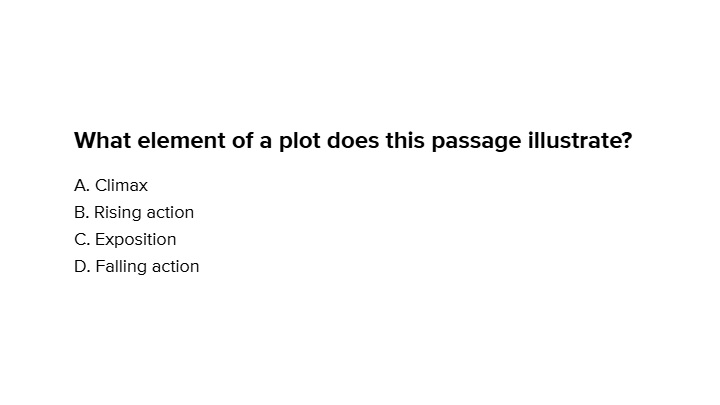Understanding the elements of a plot is essential for both readers and writers, as it provides a framework for analyzing and crafting compelling narratives. The primary components of a plot include exposition, rising action, climax, falling action, and resolution. Each serves a distinct purpose in the development of a story.
Exposition
The exposition is the introductory part of a story where the setting, characters, and primary conflict are established. It provides the background information necessary for understanding the context of the narrative. For example, in a mystery novel, the exposition might introduce the detective, the crime scene, and the victim.
Rising Action
Following the exposition, the rising action builds tension and develops the story’s central conflict. This phase involves a series of events that complicate the situation, leading to increased stakes and suspense. For instance, in an adventure story, the rising action could involve the protagonist facing various obstacles while pursuing a treasure.
Climax
The climax is the turning point or the most intense moment of the story, where the main conflict reaches its peak. It’s the moment of greatest tension and often involves a decisive confrontation or revelation. In a romance novel, the climax might occur when the protagonists confess their love amidst significant obstacles.
What Element Of A Plot Does This Passage Illustrate? Climax Rising Action Exposition Falling Action
After the climax, the falling action deals with the consequences of the climax and begins to resolve the story’s conflicts. This phase shows the characters dealing with the aftermath of the climax, leading towards closure. For example, in a thriller, the falling action might depict the protagonist escaping danger after confronting the antagonist.
Resolution
Also known as the denouement, the resolution is where the story’s conflicts are fully resolved, and the narrative concludes. It provides a sense of closure and may hint at the characters’ futures. In a mystery, the resolution would reveal the perpetrator and explain the motives behind the crime.
Identifying Plot Elements in a Passage
To determine which plot element a passage illustrates, consider the following:
- Exposition: Does the passage introduce characters, setting, or background information?
- Rising Action: Does it present events that build tension or complicate the central conflict?
- Climax: Is it the moment of highest tension or a turning point in the narrative?
- Falling Action: Does it show the aftermath of the climax, leading towards resolution?
- Resolution: Does it provide closure and resolve the main conflicts?
Understanding these plot elements enhances one’s appreciation of storytelling and aids in the creation of structured, engaging narratives.
Read More – Dallas Mavericks Vs Timberwolves Match Player Stats
Frequently Asked Questions
-
What is the purpose of the exposition in a story?
The exposition sets the stage for the narrative by introducing the main characters, establishing the setting, and presenting the primary conflict. It provides the necessary background information for readers to understand the context of the story.
-
How does the rising action differ from the climax?
The rising action consists of events that build tension and develop the story’s central conflict, leading up to the climax. The climax is the turning point or the most intense moment in the narrative, where the main conflict reaches its peak.
-
Can a story have multiple climaxes?
While traditional narratives typically have a single climax, complex stories, especially in genres like epic tales or multi-threaded narratives, can feature multiple climactic moments. Each subplot may have its own climax, contributing to the overall tension and resolution of the main story.



